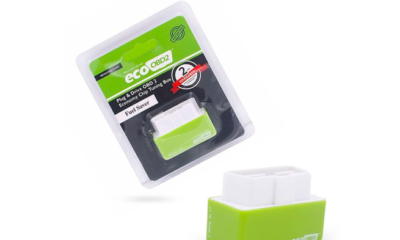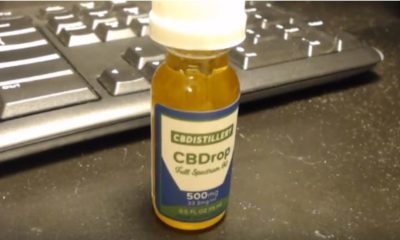Science
NASA to launch safety review at SpaceX following news of Elon Musk smoking pot

When NASA associated with Boeing and Spacex in order to fly the astronauts to ISS, the companies most probably expected that the government based space agency would always monitor the activities. However, what actually happened is the fact that NASA actually prompted a probe following the podcast with SpaceX CEO Elon Musk.
After it was revealed that Musk smoked pot with the podcast host Joe Rogan, NASA is now conducting a proper safety review for both the companies. While NASA refrained from confirming whether this sudden check had any association with Musk’s unprofessional behavior, the spokesperson for the company mentioned that this is just to ensure that the companies adhere to the workplace safety requirements as listed by NASA. This also includes a drug-free work environment to ensure zero compromise in terms of safety.
While NASA’s reaction to Musk’s recreational activity might seem a bit exaggerated reaction, it’s not the first company to do so. According to reports, the Air Force took a peak at Musk’s behavior. They stated that the use of weed or any similar illegal drugs is actually prohibited for anyone that holds a security clearance from the government. Musk’s appeared on Joe Rogan’s podcast dated 6th September.
Science
Microplastics and Human Consciousness: What You Need To Know

Microplastics have become a pervasive part of our environment, infiltrating ecosystems, water sources, and even the air we breathe. These tiny particles, often less than 5 millimeters in size, are not only an environmental issue but are also increasingly being studied for their potential impact on human health. While much of the research has focused on the physical effects, emerging studies suggest that microplastics may also affect mental health and cognitive functions — areas closely linked to human consciousness.
Organizations like Human Consciousness Support are raising awareness about the potential links between environmental factors, such as microplastics, and human consciousness. Understanding these connections is vital for promoting both environmental sustainability and mental well-being.
The pervasive nature of microplastics
Microplastics are now found in almost every corner of the planet. Originating from the breakdown of larger plastic items or being intentionally added to consumer products, these particles have made their way into our oceans, rivers, soil, and atmosphere. They are consumed by marine life, travel up the food chain, and have even been detected in human blood and tissues.
The environmental harm caused by microplastics is well-documented, but a growing body of research is beginning to investigate how microplastics may affect the human body at a deeper level, including the brain. As these tiny particles become a permanent fixture in our environment, their potential influence on human consciousness and mental functions cannot be overlooked.
MasterPeace, a product of Human Consciousness Support, plays a crucial role in addressing this issue. As a leading detoxification supplement, it is designed to help remove nano-sized toxins, including microplastics, from the body. Its key ingredient, clinoptilolite zeolite, acts as a natural binder for toxins, trapping and helping to remove them from the system. Paired with sea plasma nutrition, MasterPeace offers a holistic approach to detoxification, promoting both physical and mental well-being.
Microplastics and mental well-being
Microplastics’ potential mental health impacts are still under study, but their ability to carry and release harmful chemicals is a cause for concern. These particles are known to absorb pollutants such as heavy metals, pesticides, and industrial chemicals, which can then enter the body when microplastics are ingested or inhaled. Once in the bloodstream, these toxins could interfere with cognitive functions and emotional stability, raising the possibility that microplastics contribute to neurological issues.
This Cellular Toxin Clinical Study offers some insight into how toxic substances can be addressed. Over a 90-day period, three separate subjects using the MasterPeace protocol experienced significant reductions in polyethylene (PE) and polypropylene (PP) levels. After 35 days, the first subject experienced a 92% reduction in PE and PP by nearly 47%; the second subject witnessed a nearly 51% reduction in PP levels; and the third a nearly 67% and 93% drop in PP and PE, respectively. Other toxins measured in each subject — graphene oxide, PFOS, and PFOA — were also reduced significantly due to the MasterPeace protocol. This data highlights the effectiveness of MasterPeace in reducing toxic metal levels, suggesting its potential to help manage the body’s burden of nano-sized toxins like microplastics.
By using nano-sized clinoptilolite zeolite and bioavailable sea plasma, MasterPeace can help capture and eliminate toxins wherever water flows in the body, including the brain. This detoxification process may not only improve physical health but also support cognitive functions and emotional well-being, helping individuals better manage the mental effects of environmental pollutants.
Environmental toxins and human consciousness
Human consciousness is shaped by the chemical environment surrounding the brain. Just as toxins in food or water can harm physical health, these substances can also affect how the brain processes thoughts and emotions. Microplastics and the chemicals they carry are part of a growing concern about how environmental pollutants may influence cognitive health and emotional states.
The concept of detoxifying the body to protect consciousness aligns with MasterPeace’s mission, which seeks to offer a holistic solution to modern environmental challenges. MasterPeace’s unique combination of their patent pending “Zeolite Z” and sea plasma allows it to reach areas of the body where toxins accumulate, providing a strategic defense against harmful substances. By supporting the removal of these toxins, MasterPeace aids in maintaining mental clarity and emotional balance, potentially mitigating the impact that microplastics and other pollutants may have on consciousness.
A new era of detoxification
Recent advancements in environmental science suggest that the problem of microplastics is far from being resolved. According to a report from ScienceAlert, researchers have found a way to break down 95% of toxic “forever chemicals” in water in just 45 minutes. However, the persistence of microplastics and their ability to carry harmful substances makes them a unique challenge.
MasterPeace addresses this challenge by offering a breakthrough in holistic detoxification. Unlike traditional detox methods, MasterPeace operates at a nano level, allowing it to target toxins in areas of the body that other methods may not reach. Its sea plasma, rich in bioavailable nutrition, pairs with “Zeolite Z” to nourish the body while removing harmful substances. This combination helps to restore the body’s natural balance, supporting both physical and mental health in the face of widespread environmental toxins.
MasterPeace’s holistic approach to detoxification not only helps reduce the burden of microplastics but also promotes mental clarity and emotional balance, aligning with the broader goal of maintaining a healthy and harmonious state of consciousness.
-

 Tech4 years ago
Tech4 years agoEffuel Reviews (2021) – Effuel ECO OBD2 Saves Fuel, and Reduce Gas Cost? Effuel Customer Reviews
-

 Tech6 years ago
Tech6 years agoBosch Power Tools India Launches ‘Cordless Matlab Bosch’ Campaign to Demonstrate the Power of Cordless
-

 Lifestyle6 years ago
Lifestyle6 years agoCatholic Cases App brings Church’s Moral Teachings to Androids and iPhones
-

 Lifestyle4 years ago
Lifestyle4 years agoEast Side Hype x Billionaire Boys Club. Hottest New Streetwear Releases in Utah.
-

 Tech6 years ago
Tech6 years agoCloud Buyers & Investors to Profit in the Future
-

 Lifestyle5 years ago
Lifestyle5 years agoThe Midas of Cosmetic Dermatology: Dr. Simon Ourian
-

 Health6 years ago
Health6 years agoCBDistillery Review: Is it a scam?
-

 Entertainment6 years ago
Entertainment6 years agoAvengers Endgame now Available on 123Movies for Download & Streaming for Free
